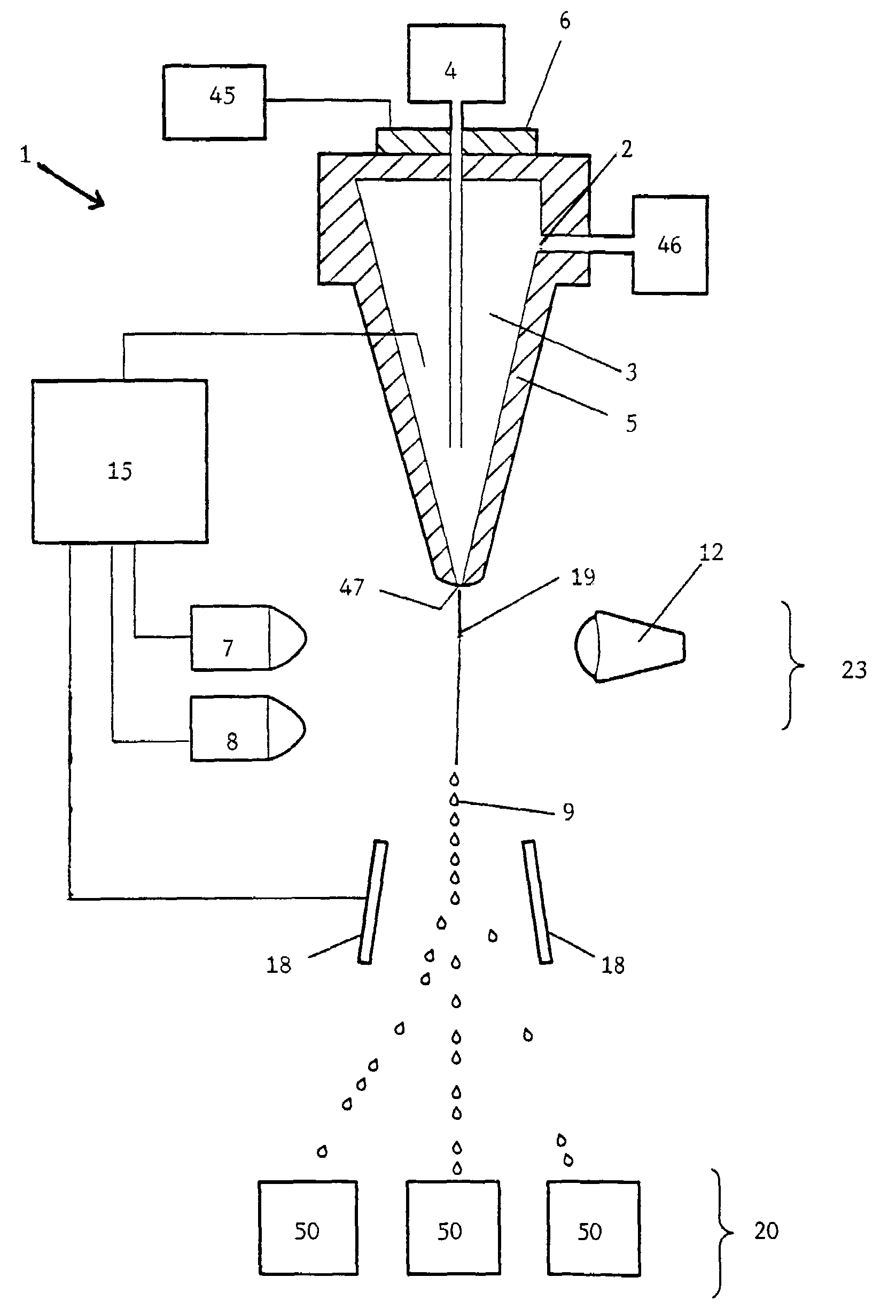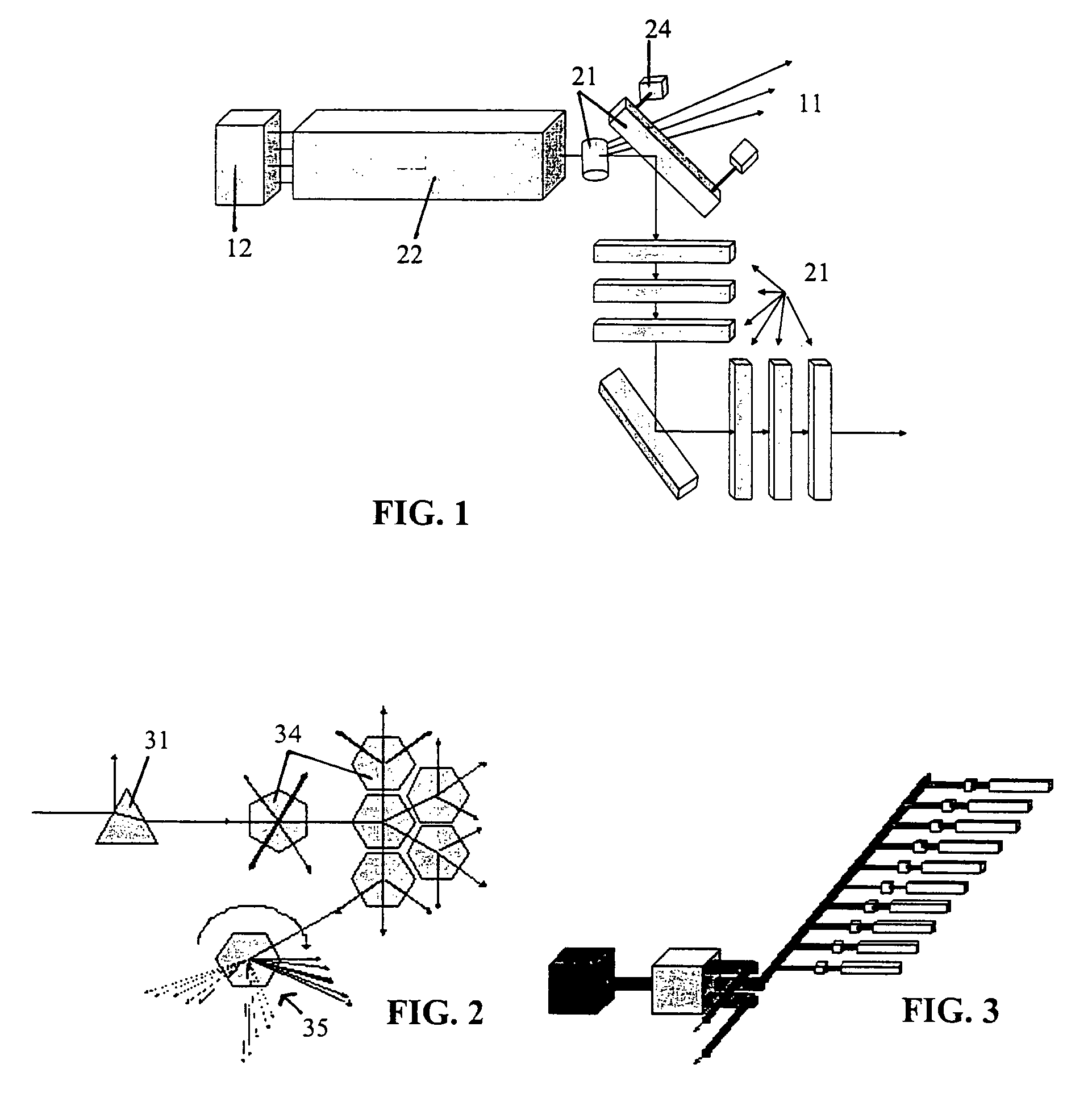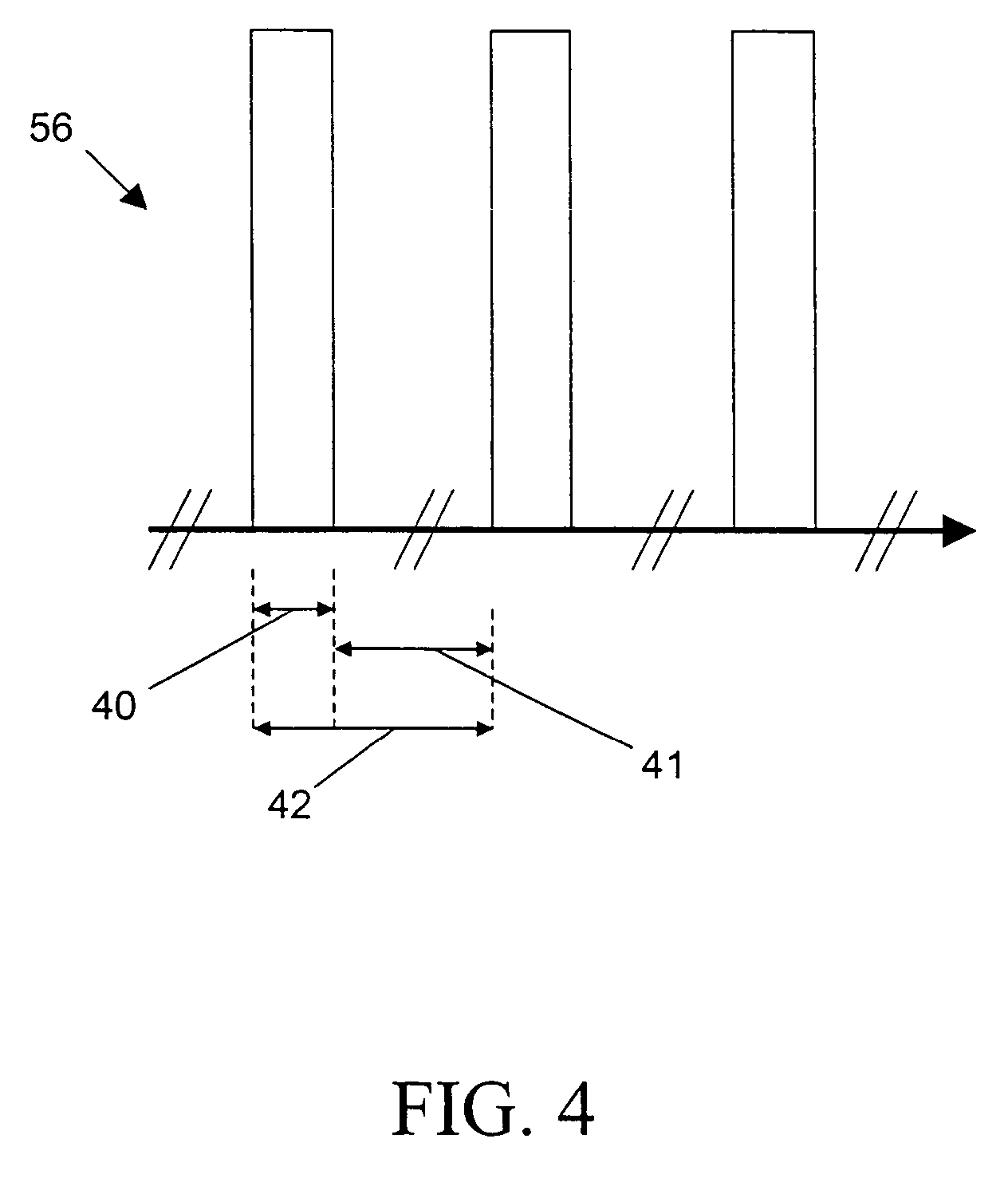Apparatus, methods and processes for sorting particles and for providing sex-sorted animal sperm
a particle and flow system technology, applied in the field of flow system for particle analysis, can solve the problems of reducing the net energy of the beam, cw lasers can have particular disadvantages for applications, and light may be affected, so as to reduce the residence time, increase the resolution, and the effect of reducing the number of residences
- Summary
- Abstract
- Description
- Claims
- Application Information
AI Technical Summary
Benefits of technology
Problems solved by technology
Method used
Image
Examples
example 1
[0193]Purified fixed bull sperm heads (also described as bull sperm nuclei), stained in standard conditions with DNA binding stain Hoechst 33342, are used as a performance standard to calibrate a sperm sorting flow cytometer prior to the sorting of live sperm. A pulsed laser (Spectrophysics VNGD350-HMD355) delivering 300 mW of energy at 355 nm and 80 MHz illuminates the sample analysis stream in a flow cytometer operating at standard settings and provides the histogram plot shown in Fig. Ex 1. This demonstrates that a standard sperm sorting flow cytometer equipped with the pulsed laser is able to resolve bull sperm nuclei into X-chromosome bearing and Y-chromosome bearing populations using standard conditions.
example 2
[0194]A sample of live bull sperm is stained in standard conditions with DNA binding stain Hoechst 33342. A pulsed laser (Spectrophysics VNGD350-HMD355) delivering 300 mW of energy at 355 nm and 80 MHz illuminates the sample analysis stream in a flow cytometer operating at standard settings sorting said sperm and provides the histogram plot shown in Fig Ex 2. This demonstrates that a standard sperm sorting flow cytometer equipped with the pulsed laser is able to resolve live sperm into X-chromosome bearing and Y-chromosome bearing populations under standard conditions.
[0195]The above sample is sorted for collection of X-chromosome bearing sperm, and the sort collection rate is 3800 live X-chromosome bearing sperm second. A resort analysis of the sample prepared in said manner measures the purity of said sorted sample to be 95%. This demonstrates that a standard sperm sorting flow cytometer equipped with the pulsed laser is able to enrich the content of a sperm population from one in...
example 3
[0197]A sample of live bull sperm is stained in standard conditions with DNA binding stain Hoechst 33342. A pulsed laser (Spectrophysics VNGD350-HMD355) delivering 300 mW of energy at 355 nm and 80 MHz is equipped with beam splitters and neutral density filters, in five separate conditions, to provide illumination energy beam levels of 160 mW (53% of beam power), 130 mW (43% of beam power), 90 mW (30% of beam power), 60 mW (20% of beam power), and 20 mW (6.6% of beam power), respectively, to illuminate the sample analysis stream of a sperm sorting flow cytometer operating at standard settings sorting said stained sperm and providing the 5 histogram plots shown in Fig Ex 3. This demonstrates that a standard sperm sorting flow cytometer equipped with the pulsed laser is able to clearly resolve live sperm with energies as low as 60 mW (20% of the beam).
[0198]The above samples are sorted at each of the 5 beam energy settings for collection of X-chromosome bearing sperm and Y-chromosome ...
PUM
 Login to View More
Login to View More Abstract
Description
Claims
Application Information
 Login to View More
Login to View More - R&D
- Intellectual Property
- Life Sciences
- Materials
- Tech Scout
- Unparalleled Data Quality
- Higher Quality Content
- 60% Fewer Hallucinations
Browse by: Latest US Patents, China's latest patents, Technical Efficacy Thesaurus, Application Domain, Technology Topic, Popular Technical Reports.
© 2025 PatSnap. All rights reserved.Legal|Privacy policy|Modern Slavery Act Transparency Statement|Sitemap|About US| Contact US: help@patsnap.com



